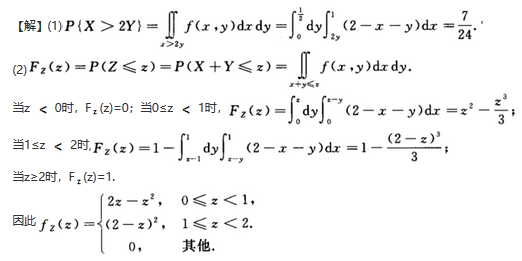考前冲刺:2021年考研英语阅读经典试题及答案(二十五)
发布时间:2020-10-10
最近,有小伙伴在询问最后阶段,考研英语该如何备考才最有效。最后阶段,我们应该将备考的重点放在复习和了解考试上,多去练习历年真题和模拟试题。下面,51题库考试学习网为大家带来考研初试的一些模拟试题,一起来看看吧。
Investigators of monkey’s social behavior have always been struck
by monkeys’ aggressive
potential and the consequent need for social control of their aggressive
behavior. Studies directed at describing aggressive behavior and the situations
that elicit it, as well as the social mechanisms that control it, were
therefore among the first investigations of monkeys’ social behavior.
Investigators initially believed that
monkeys would compete for any resource in the environment: hungry monkeys would
fight over food, thirsty monkeys would fight over water, and, in general, at
time more than one monkey in a group sought the same incentive simultaneously,
a dispute would result and would be resolved through some form of aggression.
However, the motivating force of competition for incentives began to be doubted
when experiments like Southwick’s on
the reduction of space or the withholding of food failed to produce more than
temporary increases in intragroup aggression. Indeed, food deprivation not only
failed to increase aggression but in some cases actually resulted in decreased
frequencies of aggression.
Studies of animals in the wild under
conditions of extreme food deprivation likewise revealed that starving monkeys
devoted almost all available energy to foraging, with little energy remaining
for aggressive interaction. Furthermore, accumulating evidence from later
studies of a variety of primate groups, for example, the study conducted by
Bernstein, indicates that one of the most potent stimuli for eliciting
aggression is the introduction of an intruder into an organized group. Such
introductions result in far more serious aggression than that produced in any
other types of experiments contrived to produce competition.
These studies of intruders suggest that
adult members of the same species introduced to one another for the first time
show considerable hostility because, in the absence of a social order, one must
be established to control interanimal relationships. When a single new animal is
introduced into an existing social organization, the newcomer meets even more
serious aggression. Whereas in the first case aggression establishes a social
order, in the second case resident animals mob the intruder, thereby initially
excluding the new animal from the existing social unit. The simultaneous
introduction of several animals lessens the effect, if only because the group
divides its attention among the multiple targets. If, however, the several
animals introduced a group constitute their own social unit, each group may
fight the opposing group as a unit; but, again, no individual is subjected to
mass attack, and the very cohesion of the groups precludes prolonged individual
combat. The submission of the defeated group, rather than unleashing unchecked
aggression on the part of the victorious group, reduces both the intensity and
frequency of further attack. Monkey groups therefore seem to be organized
primarily to maintain their established social order rather than to engage in
hostilities per se.
1. The author of the text is primarily
concerned with
[A] advancing a new methodology for
changing a monkey’s social behavior.
[B] comparing the methods of several
research studies on aggression among monkeys.
[C] explaining the reasons for researcher’s interest in monkey’s social behavior.
[D] discussing the development of
investigators’ theories about
aggression among monkeys.
2. Which of the following best summarizes
the findings reported in the text about the effects of food deprivation on monkeys’ behavior?
[A] Food deprivation has no effect on
aggression among monkeys.
[B] Food deprivation increases aggression
among monkeys because one of the most potent stimuli for eliciting aggression
is the competition for incentives.
[C] Food deprivation may increase long-term
aggression among monkeys in a laboratory setting, but it produces only
temporary increase among monkeys in the wild.
[D] Food deprivation may temporarily
increase aggression among monkeys, but it also leads to a decrease in conflict.
3. The text suggests that investigators of
monkeys’ social behavior
have been especially interested in aggressive behavior among monkeys because
[A] aggression is the most common social
behavior among monkeys.
[B] successful competition for incentives
determines the social order in a monkey group.
[C] situation that elicit aggressive
behavior can be studied in a laboratory.
[D] most monkeys are potentially
aggressive, yet they live in social units that could not function without
control of their aggressive impulses.
4. The text supplies information to answer
which of the following questions?
[A] How does the reduction of space affect
intragroup aggression among monkeys in an experimental setting?
[B] Do family units within a monkey social
group compete with other family units for food?
[C] What are the mechanisms by which the
social order of an established group of monkeys controls aggression within that
group?
[D] How do monkeys engaged in aggression
with other monkeys signal submission?
5. Which of the following best describes
the organization of the second paragraph?
[A] A hypothesis is explained and counter
evidence is described.
[B] A theory is advanced and specific
evidence supporting it is cited.
[C] Field observations are described and a
conclusion about their significance is drawn.
[D] Two theories are explained and evidence
supporting each of them is detailed.
参考答案及解析
1.【答案】D
【考点解析】本题是一道中心主旨题。全文从头至尾围绕着 “aggression”一词进行论述和讨论,故本题的正确答案中应含有“aggression”一词。第二段的第二句是本文论述和讨论中的一条分水岭,从该句往后叙述科学家们对“aggression”的新认识和发现;该句以前的部分叙述科学家们以往的认识。这就暗示了科学家有关“aggression”理论的进一步发展(development)。考生在阅读原文时应重视并且善于捕捉和理解有关对立对比对照的信息。
2.【答案】D
【考点解析】这是一道归纳推导题。根据题干中的 “food deprivation”这两个单词可以把本题的答案信息来源确定在第二段的倒数第一、二句和第三段的首句,从这三句中可直接归纳推导出本题的正确选项D。考生在解题时要善于利用题干中的词语确定正确答案信息在原文中的准确位置。
3.【答案】D
【考点解析】本题是一道审题定位题型。考生可根据题干中的“have been especially interested in…”将本题的答案信息来源确定在第一段的第一句,因为第一句中的
“have always been struck by…”与之含义相同。 “strike”(过去分词是struck)的含义是“吸引”。第一句话中的 “the consequent need for social control of
their aggressive behavior” 以及第二句话中的“the social mechanisms that control it”均暗示本题的正确答案是D。考生在解题时一定要首先具备审题定位的能力,其次还要善于理解原文的细节信息。
4.【答案】A
【考点解析】这是一道主题句理解题型。从客观上讲,本题的题干没有提供任何可以利用的信息帮助我们去在原文中确定本题的信息来源。但是从另一方面讲,这道题难在表面,易在本质,因为每一个注意到本文重点关键句的同学都不会忽略本文第二段的第二句,正是这句话给出了我们本题的正确答案。考生在解题时,尤其在迷失解题思路时,一定要多想一想全文的中心主旨句以及每段的中心主旨句。这对于破解此类题型是非常重要的。
5.【答案】A
【考点解析】这是一道段落结构以及句间关系识别题。第二段的第二句和第三句是对第二段第一句所提出的假设(hypothesis)的否定。第二段第二句利用 “Southwick”
的研究成果作为证据(evidence)来否定以前科学家的假设。故本题的正确答案应该是A。考生在解题时应重视每个段落中每句话之间的相互关系。
以上就是51题库考试学习网为大家带来的全部内容,希望能给大家一些帮助。51题库考试学习网提醒:2021年考研正式报名已经开始,在预报名阶段未来得及报名的小伙伴要注意了。另外,小伙伴们如果还有其他关于考研信息的疑问,也可以留言咨询哦。
下面小编为大家准备了 研究生入学 的相关考题,供大家学习参考。
 (1)求P(X>2Y);(2)设Z=X+Y,求Z的概率密度函数.
(1)求P(X>2Y);(2)设Z=X+Y,求Z的概率密度函数.

B.宋朝
C.元朝
D.明朝
A.直小血管的逆流倍增
B.直小血管的逆流交换
C.髓袢的逆流倍增
D.远曲小管和集合管对水的重吸收
声明:本文内容由互联网用户自发贡献自行上传,本网站不拥有所有权,未作人工编辑处理,也不承担相关法律责任。如果您发现有涉嫌版权的内容,欢迎发送邮件至:contact@51tk.com 进行举报,并提供相关证据,工作人员会在5个工作日内联系你,一经查实,本站将立刻删除涉嫌侵权内容。
- 2020-10-11
- 2020-10-25
- 2020-10-10
- 2020-10-18
- 2020-10-16
- 2020-10-12
- 2020-09-02
- 2020-10-14
- 2020-10-14
- 2020-09-03
- 2020-10-12
- 2020-10-16
- 2020-10-17
- 2020-10-26
- 2020-10-10
- 2020-10-18
- 2020-10-17
- 2020-10-26
- 2020-10-15
- 2020-10-18
- 2020-10-18
- 2020-10-15
- 2020-10-09
- 2020-10-11
- 2020-10-12
- 2020-10-26
- 2020-10-10
- 2020-10-10
- 2020-10-26
- 2020-10-12